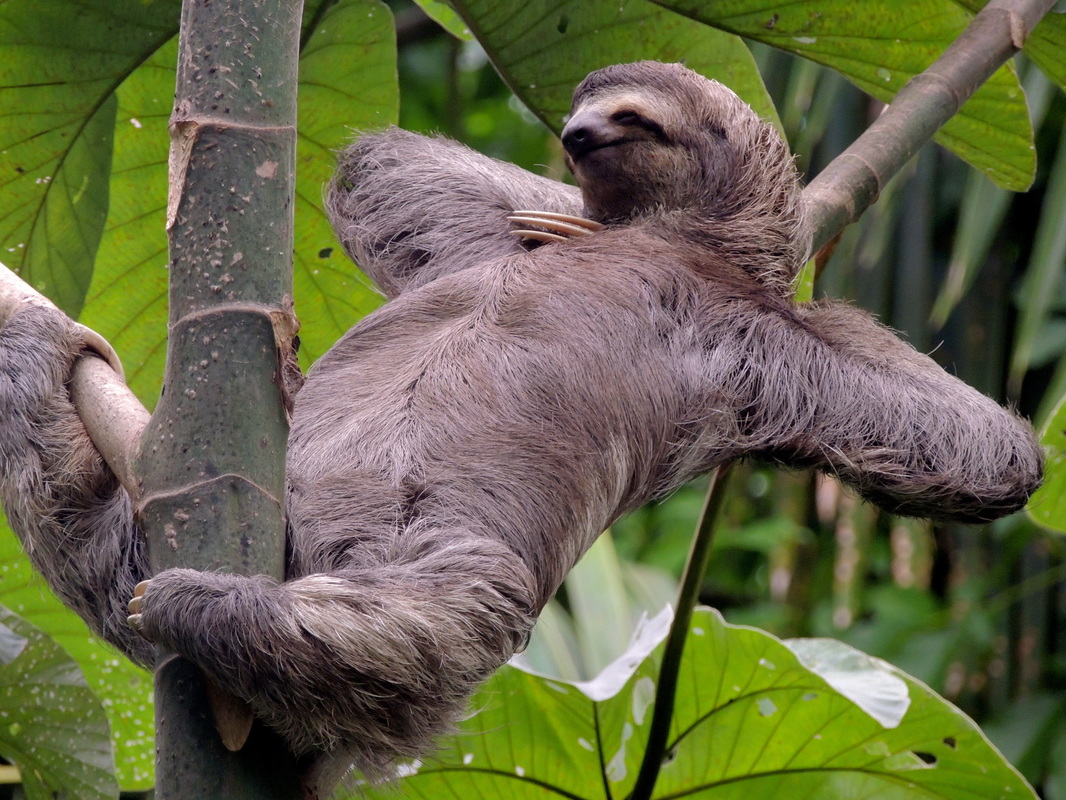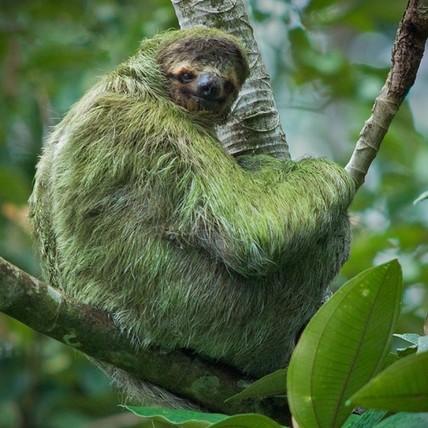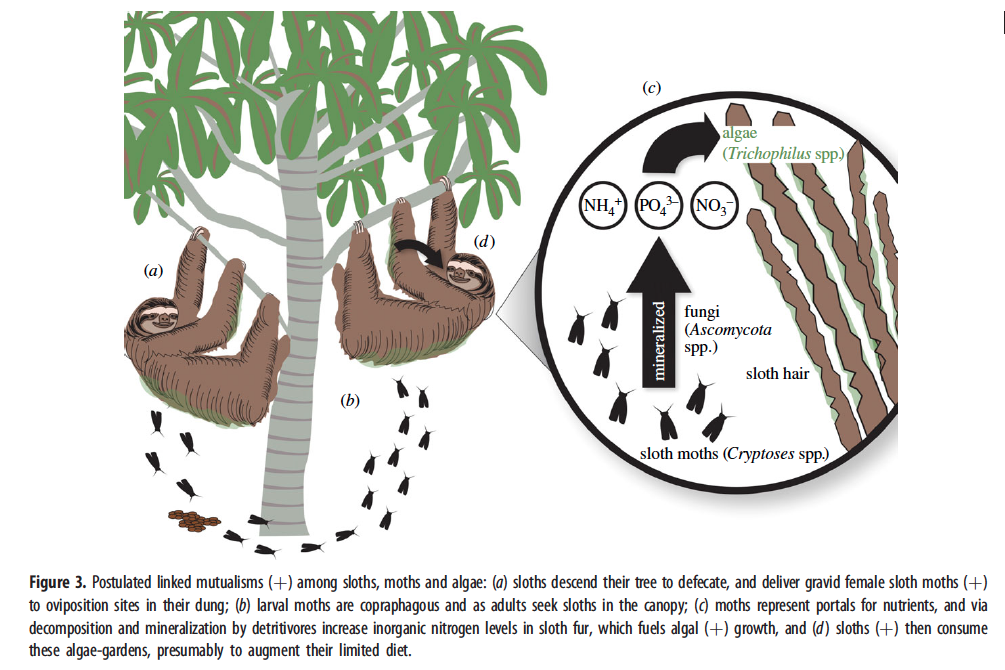|
When you picture a lazy human, what do you picture? This? Sorry if that stunted your creativity. But what does this guy have in common with Harold (if you haven't met him, see my previous blog post)?
No, definitely not... Only getting up to go the bathroom? Camouflaging oneself in food? Well, kind of. Except these behaviors, for Harold, actually confer fitness benefits. Let me explain with the help of some evidence from Pauli et al. 2014 (A syndrome of mutualism reinforces the lifestyle of a sloth). The three-toed sloth only gets up (or down) to go to the bathroom. He descends from his tree about once per week to defecate. This behavior is both risky (most sloth deaths occur from predation during the descent) and energetically costly (the trip comprises up to 8% of the sloths daily energy budget). If a behavior persists that is energetically costly and dangerous, there must be some fitness benefit from that behavior, right? A mutualistic partner of the sloth, the pyralid moth, very clearly benefits from this risky behavior: The moth uses the sloth fur for habitat and for mating. When the sloth descends from the tree to defecate, the female moth lays her eggs in the dung. There, her larvae are surrounded by ample nutrients to develop into mature adults who can then fly into the tree canopy to find their very own sloth. However, it hasn’t always been clear how or even if the sloth benefits from this mutualism. But, the results from this research show that they do: the act of descending from the tree to defecate provides sloths with a higher number of moths living in their fur. This translates to sloths with higher fur nitrogen content and this nitrogen translates to a higher biomass of algae that live in the sloth. During self-grooming the sloths consume this algae that are shown to be rich with carbohydrates and lipids. Benefit: healthier sloths. Lazy humans and sloths may both only get up to use the toilet and to ensure they are covered in food. However, for humans, going to the bathroom is an arguably safe activity, at least in terms of jaguars. And sure, we might find an additional piece of pizza en route, but you’d have a hard job convincing me of health or fitness benefits resulting from these actions. Therefore, conclusively, sloths win. Harold is an ecologically and evolutionarily fascinating creature, stay tuned for more sloth science. If you follow the NYTimes, you may have read this cool story a while ago. But after I actually read the original publication a few days ago, I had to write about it. So thanks for humoring my personal interests for the day. figure from Pauli et al. 2014
Reference: Pauli JN, Mendoza JE, Steffan SA, Carey CC, Weimer PJ, Peery MZ. 2014 A syndrome of mutualism reinforces the lifestyle of a sloth. Proc. R. Soc. B 281:20133006.
0 Comments
Leave a Reply. |
Let's see, shall we.CategoriesArchives
October 2020
|







 RSS Feed
RSS Feed